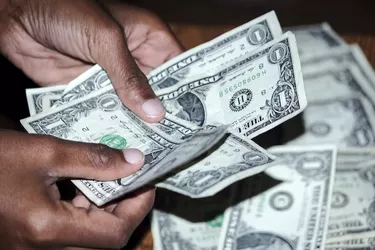
The government describes as "mutilated" any paper currency that is so damaged that it isn't clearly recognizable and usable as a bill -- usually when half or more of the bill is missing. The term also applies to heavily damaged coins. If you can meet the government's conditions, it will replace your mutilated currency at no cost. The Bureau of Engraving and Printing handles paper currency claims, while the U.S. Mint handles coins.
Currency Mutilation
Video of the Day
The Department of the Treasury says that the most common causes of currency mutilation are fire, pests, burial, explosives and exposure to destructive chemicals. When you submit a mutilated currency claim, the Bureau of Engraving and Printing's Office of Financial Management will have experts inspect your damaged paper money. The agency will reimburse you only for bills that are more than 50 percent identifiable or when the evidence supports your claim that the missing portions were destroyed. These conditions help the government prevent fraud.
Video of the Day
Preparing Mutilated Currency for Shipment
To replace mutilated currency, you must mail or personally deliver it to the Bureau of Engraving and Printing. When collecting and packing the currency, preserve all the fragments that you can. Don't move the currency any more than you absolutely must, and don't fold or unfold it from its current state. Pack it carefully in plastic and cotton, unless the currency is contained in a purse or wallet; in that case, leave it in its container and send the whole thing.
Replacing Less Damaged Currency
If more than 50 percent of your damaged bill is clearly intact and recognizable as a U.S. Treasury bill, you can take it to your local bank for an exchange. This typically applies to currency that has become dirty, worn out, ripped or vandalized. As an alternative to exchanging the money, you might be able to wash the bills with warm water, dish soap and a rag. That's because U.S. paper currency isn't actually paper: It's a blend of cotton and linen.
Damaged Coins
For damaged coins, the U.S. Mint distinguishes between "mutilated" and "uncurrent" damage. Uncurrent coins are those that have simply worn down or are covered in oxidation but are still recognizable as U.S. coins and countable by machine. You can exchange these at your bank. Mutilated coins are bent, broken, melted, fused or corroded, or they're missing such large chunks that they can't be counted by a machine. Provided these coins aren't damaged so badly that they are no longer recognizable as coins, you can mail or personally deliver them to the U.S. Mint.